Accepted Scientific Name: Thelocactus setispinus (Engelm.) E.F.Anderson
Bradleya 5: 59. 1987
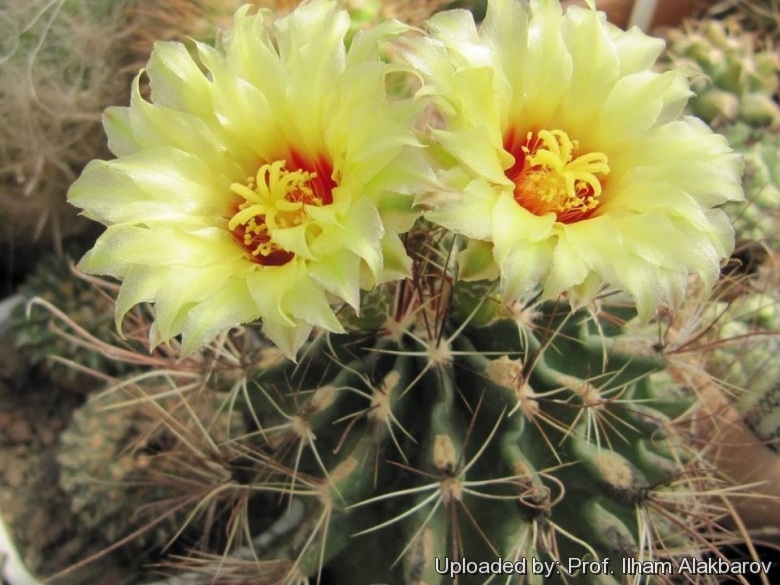
Echinocactus setispinus (Thelocactus setispinus) Photo by: Prof. Ilham Alakbarov
Origin and Habitat: Distribution: USA, Southern Texas ( Cameron, Hidalgo, and Starr counties) and northern Mexico (Coahuila, Nuevo León and Tamaulipas ).
Type locality: Thickets along the Colorado River, Texas.
Altitude: Sea level to 550 metres.
Habitat: It is the northernmost species of the genus, occurring in thorn shrub vegetation and coastal lowlands under Mesquite scrubs, along with Astrophytum asteriasSN|1464]]SN|1464]], Mammillaria heyderiSN|20805]]SN|20805]], Echinocereus stramineusSN|7817]]SN|7817]], Wilcoxia tamaulipensisSN|8564]]SN|8564]] and Homalocephala texensisSN|2230]]SN|2230]].
Synonyms:
See all synonyms of Thelocactus setispinus
back
Accepted name in llifle Database:Thelocactus setispinus (Engelm.) E.F.AndersonBradleya 5: 59. 1987Synonymy: 34
Cultivars
(1):
back
Common Names include:
ENGLISH: Hedgehog cactus, Twisted Rib Cactus, Fishhook Cactus
Description: Thelocactus setispinusSN|3447]]SN|3447]], best known as Hamatocactus setispinusSN|3446]]SN|3446]] is a well known cactus species that produce a succession of large silky flowers in summer and autumn. It is quite variable and has had at least 30 scientific synonyms, none of which recognized. The stem sizes vary from one population to another and the extreme forms are certainly very different.. At one time, two separate varieties based on size were recognized. The larger stem size is sometimes confused with Ferocactus hamatacanthusSN|3403]]SN|3403]] var. sinuatus, which has all-yellow flowers. Thelocactus setispinusSN|3447]]SN|3447]] flowers have red centers.
Habit: Solitary, rarely sprouting near base to produce 2-3 branches, but sometimes forming large clusters, often branching or budding above.
Roots: Long fibrous roots.
Stems: 7-15(-30) cm high, 5-9 cm in diameter, globose to elongate globose, when young, growing cylindroid later, yellow-green to dull blue-green.
Ribs: 12-15, more or less oblique or twisted, thin, high, undulate on the margin, not tuberculate 1-2 mm wide, 14-18 mm high.
Areoles: 5-9 mm long, 2-3 mm wide, 20 mm apart, with extrafloral nectaries.
Radial spines: 9 to 17, slender, often 4 cm long, some white, others brownish, radiating, straight, 9-24 mm long.
Central spines: 1 to 3, longer than radials of which one, yellowish white to red, erect, hooked, 16-27 mm long.
Flower: Radial, 4-5(-7) cm long, 3-4cm in diameter, yellow, with a deep red centrer. Pericarpels scaly. Tube will developed. Inner perianth-segments oblong, acute, widely spreading. Stygma lobes pale yellow to white.
Blooming season: Summer to Autumn (Fall).
Fruit: Round, to ovoid, red with white pulp, 8-15 mm long, 10-14 mm in diameter, scaly, nearly naked, fleshy at maturity, indehiscent.
Seeds: 1,2 to 1,7 mm long, 0,5-0,8 mm in diameter, finely tuberculate.
Subspecies, varieties, forms and cultivars of plants belonging to the Thelocactus setispinus group
Bibliography: Major references and further lectures
1) Edward Anderson “The Cactus family” Timber Press, Incorporated, 2001
2) James Cullen, Sabina G. Knees, H. Suzanne Cubey "The European Garden Flora Flowering Plants: A Manual for the Identification of Plants Cultivated in Europe, Both Out-of-Doors and Under Glass" Cambridge University Press, 11/Aug/2011
12) David R Hunt; Nigel P Taylor; Graham Charles; International Cactaceae Systematics Group. "The New Cactus Lexicon" dh books, 2006
13) Brian Loflin, Shirley Loflin “Texas Cacti: A Field Guide” Texas A&M University Press, 26/ott/2009
14) Albert Michael Powell, James F. Weedin “Cacti of the Trans-Pecos and Adjacent Areas” Texas Tech University Press, 2004
15) Del Weniger “Cacti of the Southwest: Texas, New Mexico, Oklahoma, Arkansas, and Louisiana” University of Texas Press, 1969
16) “Rare Plants of Texas: A Field Guide” Texas A&M University Press, 2007
17) Nathaniel Lord Britton, Joseph Nelson Rose “Cactaceae: Descriptions and Illustrations of Plants of the Cactus Family” Volume 3, 1922
18) Christopher Brickell “RHS Encyclopedia of Plants and Flowers” Dorling Kindersley Ltd, 01/set/2010
19) Campbell Loughmiller “Texas Wildflowers” University of Texas Press, 2006
20) Urs Eggli, Leonard E. Newton: “Etymological Dictionary of Succulent Plant Names.” Birkhäuser 2004
21) Pierre C. Fischer “70 Common Cacti of the Southwest” Western National Parks Association, 1989
22) Alfred Richardson “Plants of Deep South Texas: A Field Guide to the Woody and Flowering Species” Texas A&M University Press, 2010
23) Hiroshi Hirao “Colour encyclopaedia of cacti” Japan 1979 (Japanese language and script)
24) Willy Cullmann, Erich Götz (Dozent Dr.), Gerhard Gröner “The encyclopedia of cacti” Portland, OR: Timber Press, 1986
25) Hans Hecht “BLV-Handbuch der Kakteen” BLV-Verlagsgesellschaft, 1982
26) E Haustein “Der Kosmos Kakteenfuehrer (the Kosmos Cactus Guide)” Balogh Scientific Books 01 December 1998
27) Alwin Berger: “Kakteen: Anleitung zur Kultur und Kenntnis der wichtigsten eingeführten Arten.” Eugen Ulmer, Stuttgart 1929
28) Ulises Guzmán, Salvador Arias, Patricia Dávila: “Catálogo de cactáceas mexicanas.” Universidad Nacional Autónoma de México, Mexiko-Stadt 2003
29) Karl Schumann: “Gesamtbeschreibung der Kakteen (Monographia cactacearum).” J. Neumann, Neudamm 1899
30) George Engelmann, Asa Gray: “Plantae Lindheimerianae : an enumeration of F. Lindheimer's collection of Texan plants, with remarks and descriptions of new species, etc.“ 1845
 Echinocactus setispinus (Thelocactus setispinus) Photo by: Valentino Vallicelli
Echinocactus setispinus (Thelocactus setispinus) Photo by: Valentino Vallicelli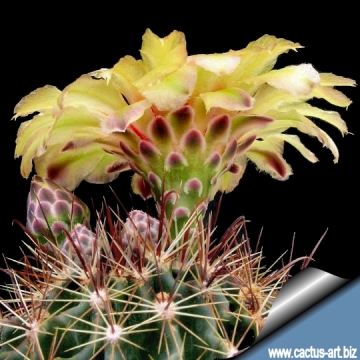 Echinocactus setispinus (Thelocactus setispinus) Photo by: Cactus Art
Echinocactus setispinus (Thelocactus setispinus) Photo by: Cactus Art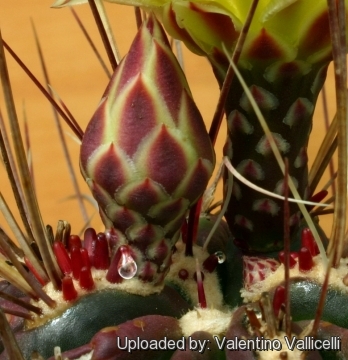 Echinocactus setispinus (Thelocactus setispinus) Photo by: Valentino Vallicelli
Echinocactus setispinus (Thelocactus setispinus) Photo by: Valentino Vallicelli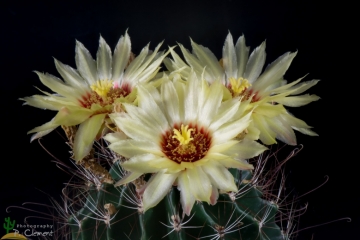 Echinocactus setispinus (Thelocactus setispinus) Photo by: Peiffer Clement
Echinocactus setispinus (Thelocactus setispinus) Photo by: Peiffer Clement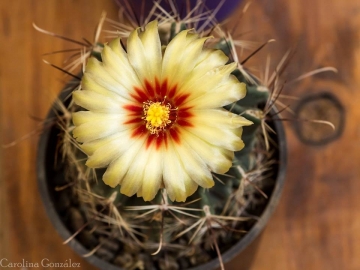 Echinocactus setispinus (Thelocactus setispinus) Photo by: Carolina González
Echinocactus setispinus (Thelocactus setispinus) Photo by: Carolina González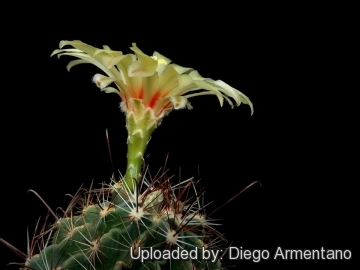 Echinocactus setispinus (Thelocactus setispinus) Photo by: Diego Armentano
Echinocactus setispinus (Thelocactus setispinus) Photo by: Diego Armentano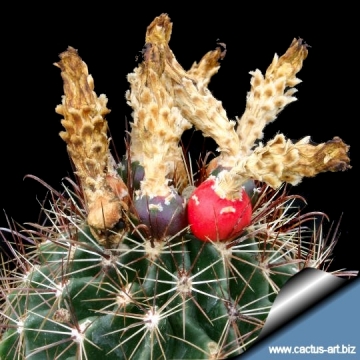 Echinocactus setispinus (Thelocactus setispinus) Photo by: Cactus Art
Echinocactus setispinus (Thelocactus setispinus) Photo by: Cactus Art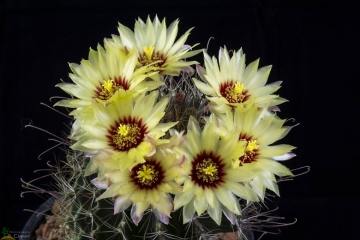 Echinocactus setispinus (Thelocactus setispinus) Photo by: Peiffer Clement
Echinocactus setispinus (Thelocactus setispinus) Photo by: Peiffer ClementCultivation and Propagation: This species is easy and well worth growing. Require little care once they have reached a nice flowering size. Thelocactus setispinusSN|3447]]SN|3447]] is suited for any rich, well drained soil in full sun throughout the year (But do better with some light shade in summer).
Pot culture: grow best in a well-drained container filled with a porous cactus soil mixture that doesn't contain too much humus. To insure robust plants water and fertilize during the aestival growth cycle, this plant need plenty of water (indicatively to about once a week) But needs to be avoided wetting the bodies of these plants while they are in sunlight. A wet cactus in the sun light can cause sun burning which can lead to scars or even fungal infections and death. Care must be taken to prevent sooty mould forming on the sugary secretions from near the areoles.
Frost Tolerance: In winter keep completely dry at 5°C this usually aids in maintaining a healthier plant, but it is hardy as less as -12 to -7°C depending on the origin. (Temperature Zone: USDA 9-11)
Propagation: Seeds or cutting. Seeds are the typical way of reproducing. These cacti will easily grow from seeds and some from cuttings. Seeds can be sown in the spring or summer in well-drained pots of soil for cacti and sow the seeds thinly on top. Cover them with a bit of fine quartz grit. Moisten and lay a piece of glass across the top. The pots should be set in a warm greenhouse until they start to sprout after which the glass should be progressively removed so they can receive full light and air. It isn't good to keep the glass over the seedlings. The seedlings well developed can be planted separately in small pots.
Cuttings made from pieces of the stem of any size can be detached and laid aside for a few days to allow a protective "skin" to form over the cut. They can then be planted in pots. Place them in a spot where they'll receive sun and do not water until the soil becomes fairly dry. After a while the soil can be moistened regularly but never kept constantly saturated.
Your Photos
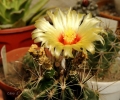
by Carolina González



















